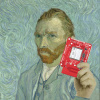Science Time with Shawn: Magnets and Electromagnetism
Magnets...how do they work?
We know you're slogging through a Monday morning, post-Halloween candy overdose, so we'll keep it simple today, and let the irrepressibly effusive Shawn lay down the Lenz's Law about magnets and electromagnetism. Shawn covers how magnetism works on an atomic level, discusses the relationship between magnetic fields and electric currents, and shows us how it works with some simple experiments.
Thanks Shawn! If you have any ideas for other basic concepts you'd like to see an upbeat engineer in a bowtie explain on camera (we've already covered licking a 9-volt battery and exploding capacitors), leave 'em in the comments & we'll see what we can come up with.
Share
Use this URL to share:
Comments 17 comments
Related Posts

Atomic Clocks, GNSS, and You!
February 1, 2022
0
Recent Posts

LiDAR, Radar, and PCR: What's The Difference?
April 25, 2024
1

SparkFun DataLogger: The Easiest Way to Log and Push Data to Your Favorite IoT Platform
April 19, 2024
0

Centimeter Level Accuracy and Easy Survey-Grade RTK Connectivity with PointOne's Polaris
April 16, 2024
0

DataLogger IoT Firmware v1.2
April 15, 2024
0

In Case You Missed it, the RA6M5 is a Thing(+)!
April 12, 2024
0

Why L-Band?
April 11, 2024
2
Tags
- 20 Years
- 3D Printing
- Accelerometer
- According to Pete
- Actobotics
- ADR
- Adventures in Science
- AI
- A La Carte
- Alchitry
- A Look Back
- Analog
- Android
- aquaponics
- Arduino
- ARGOS
- ARM
- Art
- Artemis
- Artificial Intelligence
- Ask Me Anything
- astronomy
- Audio
- AVC
- AWS
- Back to School
- badge
- BadgeLife
- Barcode
- Battery
- Beagle
- Best of...
- Binary
- Binho
- Biometrics
- Black Friday
- Blues Wireless
- Bluetooth
- Blynk
- Body Hacking
- Bosch
- Brand Ambassador
- Buck
- Business
- Button / Switch
- Caption Contest
- Cellular
- Chibitronics
- Cloud
- CNC
- Coding
- Community Partner
- Components
- computer engineering
- Connector
- Contest
- Crafting
- Crypto
- culture
- Cyber Monday
- DA16200
- DataLogger
- DEKA
- Desk of an Engineer
- Discussion
- Distance
- DIY
- DIY Bio
- Dogs
- Drones
- Dumpster Dive
- Eagle
- Edison
- Education
- EEPROM
- ElectriCute
- Elektor
- EMG
- Enclosure
- Engineering Essentials
- Engineering Roundtable
- Enginursday
- Environment
- ESLOV
- Espressif
- E-Textiles
- Ethernet
- Event
- Events and Classes
- ExpressLink
- fablab
- Firmware Update
- FIRST
- FLIR
- FPGA
- Free Day
- FreeRTOS
- Fritzing
- FTDI
- GDPR
- Gift Guide
- GIS
- GitHub
- GNSS
- GPS
- GreatScott!
- Guest Post
- Hackaday
- Hackathon
- Hacker-in-Residence
- Hacker/Maker Spaces
- Hackster
- HaLow
- Hardware Hump Day
- History Lesson
- Holiday
- Hookup
- IIoT
- IMU
- Industry News
- inspectAR
- Intel Edison
- Internet of Things
- IoT
- IoTuesday
- ipobesity
- IRC
- Iridium
- IT
- KiCad
- Kit
- Laser Cutting
- L-Band
- LCD
- Learn At Home
- LED
- Legal
- LIDAR
- Light
- LilyPad
- Livestream
- LoRa
- LTE
- Lumenati
- Machinechat
- Machine Learning
- Maker Faire
- Manufacturing
- Mars
- mathematics
- Matter
- May the 4th
- Meet Your Maker
- micro:bit
- MicroMod
- MicroPython
- mikroBUS
- MIKROE
- Milestone
- Modification Station
- Music Technology
- MyoWare
- Nate posts
- National Tour
- New Product Friday
- Newsletter
- NFC
- NVIDIA Jetson Nano
- Onion Omega
- Open Hardware
- Open Sauce
- OpenSTEM
- OSHW
- Particle
- PCB Design
- Photon
- PIR
- Please Wear a Mask
- PNT
- positioning
- PostgreSQL
- Power
- Primary
- Privacy
- Product Focus
- Production
- Programming
- Project Highlight
- Projects
- Pro Micro
- proximity
- Psychology
- Python
- Q&A
- QuickLogic
- Qwiic
- radar
- Radio
- Rapid Prototyping
- Raspberry Pi
- redboard
- RED-V
- Renesas
- Resistors
- rfid
- RISC-V
- Robotics
- RTK
- Sale
- Satellite
- Science
- Scratch
- SDR
- Sensirion
- Sensor
- Septentrio
- Services
- Servo
- SIK
- Single Board Computer
- Single Board Computers
- Smart Home
- smol
- software
- Solar
- Soldering
- Space
- SparkFun Ambassador
- SparkFun Edge
- SparkFun Live
- SparkFun Use Case
- SparkX
- SPE
- Spectacle
- Sphero
- Start a Project
- STEM/STEAM
- STM32
- STMicroelectronics
- Success with SparkFun
- Supercon
- Sustainability
- Swarm
- Table Top Gaming
- Teardown
- Tech Comparison
- Tech Talk Tuesday
- Teensy
- tensorflow
- Testing... Is this thing on?
- Thing Plus
- Thread
- tinyML
- ToF
- Tools
- Triband
- Tutorial
- u-blox
- Ultrasonic
- USB
- VCSEL
- Video
- wearables
- Weather Shield
- webinar
- Website Feature
- WiFi
- Wireless
- women
- Work From Home
- Workshop
- WPI
- XBee
- XRP
- Zigbee

Strangest "According to Pete" I've seen in a while !
Hi! I just watched Shawn's video on magnetism (https://www.sparkfun.com/news/1638). Re: the end of the video showing the magnet going through the copper pipe slowly, what about some kind of fun ride for humans? Riders put on a magnetized and jump down a large copper pipe, while feeling the magnetism first-hand! Thoughts?
This was a nice video, just right in length and complexity.
Suggestions: yes, fix the audio, but also, move the teleprompter or cards from which Shawn is taking his cues (he rarely sounds like he's reading word for word), and move them just above the camera lens, so he doesn't have to look away. Thanks for the informative video -- I look forward to more.
I would like to see the effect if you create a coil around that copper pipe and drop the magnet through. -would it change the speed of the drop -would it change the time electricity is generated -would it create a rift in the universe
Lets experiment!
As a student taking physics 2 and studying electromagnetism, I can confirm magnets are magic. Remember, Any magic sufficiently analyzed can be called science.
I can speculate on the correct dimensions, number of windings and circuits for these experiments but schematics and build instructions would be really great.
I used a full-wave rectifier with a large capacitor and white LED. But that's good to know...I'll see if I can put together a tutorial for the LED board.
How many turns to the coil? I pretty much guessed at the rectifier/capacitor. I was somewhat surprised at how short the coil is. However those shake flash lights that charge a DLC capacitor would be a hint that your demonstration would work. Perhaps a similar project would be to make a shake light - or a "shake-duino" ... hmmm .... thinking now.
A lot. Really, it wasn't scientific at all :)
I bought a spool of magnet wire, connected both ends to an oscilloscope, and dropped the large neodymium magnet through the center (which barely fit!). I saw a voltage spike of 3-5V and said it was good enough to light an LED (with a rectifier and a capacitor).
I like your idea of doing something with the shake light energy harvesting. Get enough energy to power an Arduino and measure something....hmmm....
I don't believe a word of it. It's all witchcraft. If Shawn weighs the same as a duck, then he's made of wood and therefore a witch.
Burn him!!! :P
Good video! Appreciate the mention of utilities. If you guys ever want to play with a steel bending magnet, let me know. :D Magnetic Brake
That's really cool.
Just want to mention, the IEEE symbol is a diagram of the "Right-Hand" rule when defines how electro-magnetism works in a very simple format.